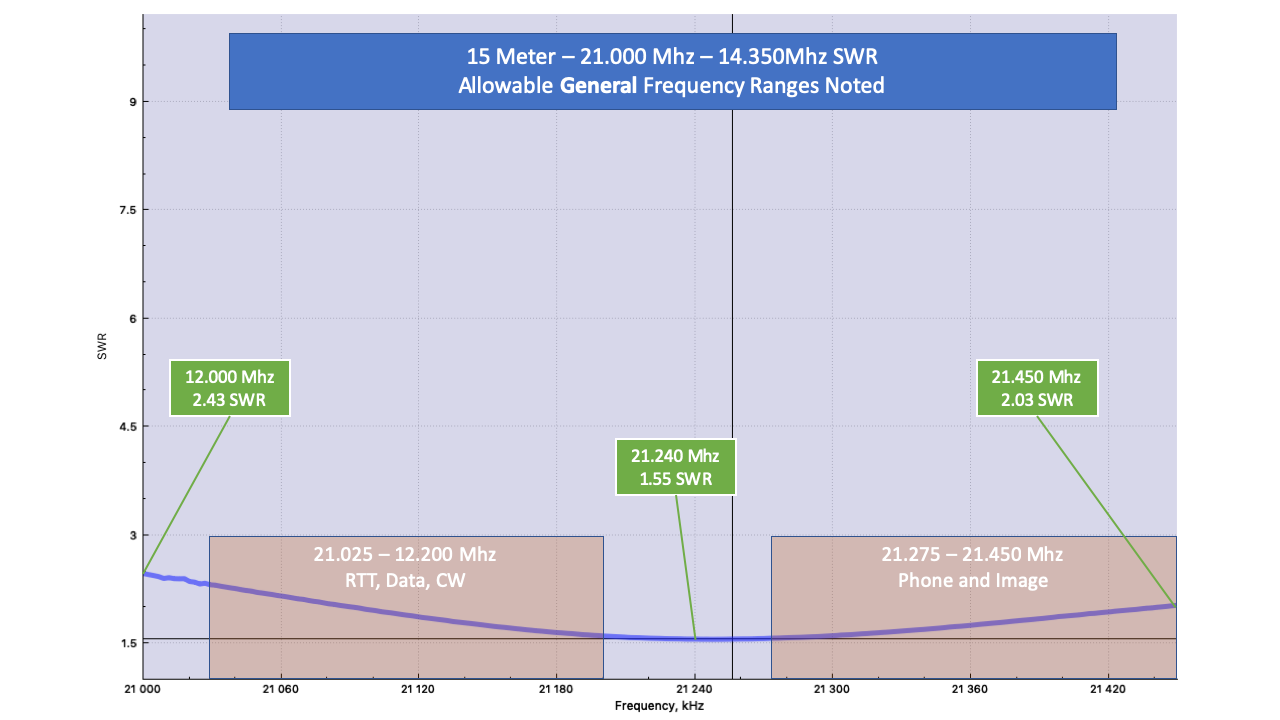I built a fan dipole according to the basic instructions in the SRI publication describing the theory and basic design.
My questions is about next steps in tuning for the various bands. I am primarily interested in the phone / image range of the band as a General (KN4MIO).
Specific questions are bold below. I apologize for including multiple questions but I felt the topic of tuning and the context of the various bands were better presented in a single question.
I did some basic tuning while on the ground and received some satisfactory results. I then positioned the antenna approximately 85' off the ground suspended between two trees and took some additional measurements. The SWR across the 80 - 15 meter range was tested and the results were good for a first pass. The shaded areas are the various bands. The second from the left is 60m can can be ignored.
Here is the SWR measured across the whole range from 80 - 15 meter

The 80 Meter band is shown below scanning from 3.5 - 4.0 Mhz.

The SWR for this band is tuned at the low end of the phone / image area at 3.8 Mhz. My understanding is that I can shorten the 80 meter antenna length to shift the SWR into the mid-range of the phone band.
Is there a way to flatten the SWR in this range or is this graph typical?
Is shortening the antenna the proper way to shift the SWR to the right?
The 40 meter band is presented scanning from 7.0 Mhz - 7.3 Mhz.
 Before adjusting the 40 meter I would complete the tuning of the 80 meter first.
Given the lower SWR is to the left of my target shortening the antenna seems to be the means to shift the SWR to the right, correct?
Before adjusting the 40 meter I would complete the tuning of the 80 meter first.
Given the lower SWR is to the left of my target shortening the antenna seems to be the means to shift the SWR to the right, correct?
Following are the 20 and 15 meter SWR scans.
 .
.
I was surprised that in the same way as the 40 meter being further to the left it seems like the 20 meter is following closely and shifting further to the left.
 For the 15 meter band I was surprised to see this range but it looks very good. Since 15 meter is really a harmonic of the 40 meter band it goes along for the ride.
For the 15 meter band I was surprised to see this range but it looks very good. Since 15 meter is really a harmonic of the 40 meter band it goes along for the ride.
Is the tuning for 15 meter primarily tied to the 40 meter dipole, or, is it more spread out amongst all dipoles?
For antenna shortening, what are the pros and cons of shortening in terms of cutting versus folding back on itself and twisting? .
Thanks in advance for providing some insight on tuning the fan dipole.
